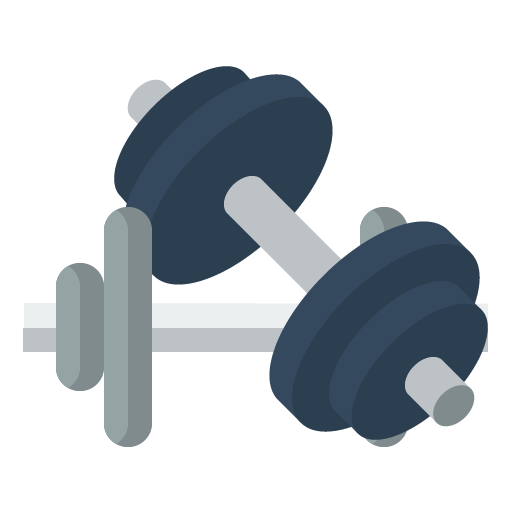Building Strength and Endurance Without a Gym

Embracing the Benefits of Home Workouts
Building strength and endurance without access to a gym is not only possible but can also be highly effective when approached strategically. Home workouts remove barriers like commuting, membership fees, and crowded equipment, allowing individuals to focus on consistency, intensity, and creativity. Bodyweight exercises, minimal equipment, and structured routines can deliver results comparable to traditional gym training.
Training at home encourages adaptability, helping individuals develop functional strength, cardiovascular endurance, and mobility. Additionally, exercising in a comfortable environment can reduce anxiety, improve focus, and make workouts more enjoyable, increasing the likelihood of long-term adherence.
Core Principles for Strength Training at Home
Strength training without a gym relies on a few key principles: progressive overload, proper form, and targeting multiple muscle groups. Progressive overload can be achieved by increasing repetitions, adjusting tempo, incorporating household items as weights, or performing more challenging variations of exercises.
Bodyweight exercises such as push-ups, squats, lunges, planks, and glute bridges provide an excellent foundation for building strength. Incorporating compound movements that engage multiple muscles simultaneously ensures maximum efficiency, allowing for shorter but highly effective workouts.
Maintaining proper form is crucial to prevent injuries and optimize results. Focus on controlled movements, engaging the targeted muscles, and avoiding momentum-based repetitions. Even without gym equipment, mindful execution of exercises provides significant strength gains over time.
Enhancing Endurance Without Machines
Endurance training can be integrated at home through cardiovascular exercises, high-intensity interval training (HIIT), and circuit routines. Activities such as jumping jacks, mountain climbers, burpees, high knees, and stair climbing effectively elevate heart rate and improve cardiovascular capacity.
HIIT is particularly valuable for home endurance training because it combines short, intense bursts of activity with brief recovery periods. A 20–30 minute HIIT session can increase stamina, burn calories, and challenge both aerobic and anaerobic systems. Circuit training, alternating strength and cardio exercises, also builds endurance while maintaining engagement and variety.
Using Minimal Equipment Effectively
While strength and endurance can be developed without gym equipment, incorporating minimal tools enhances training options. Dumbbells, resistance bands, kettlebells, and stability balls allow for progressive resistance and new movement patterns.
Resistance bands can be used for rows, presses, squats, and glute bridges, while dumbbells or kettlebells increase load for presses, curls, or weighted lunges. Stability balls improve core strength, balance, and posture. Even simple items like backpacks filled with books or water bottles can function as weights for strength exercises, providing an effective alternative for progressive overload.
Structuring Balanced Home Workouts
An effective home workout routine blends strength, endurance, and mobility exercises to target the entire body. A sample structure might include:
- Warm-up: 3–5 minutes of dynamic stretching or light cardio
- Strength segment: 15–20 minutes of bodyweight or weighted exercises
- Endurance segment: 10–15 minutes of cardio or HIIT
- Cooldown: 3–5 minutes of stretching and mobility work
Short circuits or supersets that alternate between upper and lower body exercises maintain intensity and efficiency. By rotating exercises and gradually increasing difficulty, workouts remain challenging and continue to produce results without requiring a gym.
Progressive Strategies for Continued Improvement
To avoid plateaus, it is essential to apply progressive strategies. This can include increasing the number of repetitions, extending time under tension, reducing rest periods, or modifying exercises to a more advanced variation. For example, standard push-ups can progress to decline push-ups, plyometric push-ups, or one-arm variations. Squats can evolve into single-leg or jump squats for added intensity.
Progression ensures the body is continually challenged, which is necessary for strength gains, improved endurance, and overall physical development. Tracking performance, setting goals, and regularly updating routines help maintain motivation and measurable progress.
Incorporating Functional Movements
Functional exercises mimic everyday movements and improve overall strength, stability, and mobility. Lunges, squats, planks, push-ups, and rotational exercises enhance coordination, balance, and efficiency in daily activities.
Functional training at home is particularly advantageous because it requires minimal equipment and targets multiple muscle groups simultaneously. It also strengthens stabilizing muscles, reducing the risk of injury and improving posture.
Maintaining Consistency and Motivation
Consistency is crucial for long-term success. Establishing a dedicated workout space, setting a schedule, and creating achievable goals support adherence. Mixing routines, incorporating challenges, and tracking progress maintain engagement and prevent monotony.
Motivation can also be fostered through virtual classes, online communities, or accountability partners. Celebrating small milestones, such as completing a full circuit or increasing repetitions, reinforces positive habits and strengthens commitment to fitness goals.
Recovery and Nutrition
Strength and endurance development requires adequate recovery and proper nutrition. Sufficient sleep, stretching, foam rolling, and hydration support muscle repair and performance. Consuming a balanced diet rich in protein, complex carbohydrates, and healthy fats fuels workouts and aids recovery.
Integrating rest days, active recovery sessions, or lighter workouts prevents overtraining and ensures sustainable progress. Recovery strategies are essential components of an effective home fitness plan, allowing the body to adapt and improve consistently.
Making Fitness Accessible to Everyone
Building strength and endurance without a gym proves that fitness is not limited to specialized equipment or facilities. With creativity, consistency, and strategic planning, anyone can develop a well-rounded, effective routine at home.
